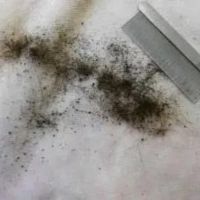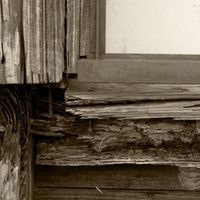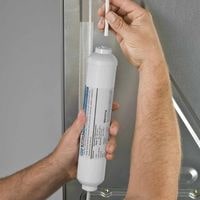Flea Dirt On Bed Sheets
Flea Dirt On Bed Sheets. Discovering mysterious dark specks on your bed sheets can be a disconcerting experience. If these tiny, puzzling particles resemble dirt and have you scratching your head, it’s possible you’re dealing with a less-than-welcome guest in your home – flea dirt.
We’ll delve into the world of flea dirt, shedding light on what it is, how it finds its way onto your bed linens, and the significance of identifying it correctly. By understanding the nature of flea dirt, you’ll be better equipped to protect the sanctity of your sleeping space and the health of your household.
Flea dirt, as the name suggests, is the fecal matter of fleas. These minute, dark granules are the byproduct of fleas feasting on the blood of their host, whether it’s your beloved pet or even you. After processing the ingested blood, adult fleas expel these dark specks, which often accumulate on surfaces where the infestation is prevalent.
If you’ve come across these enigmatic dark particles on your bed sheets, it’s essential to unravel the mystery, as this discovery can serve as an early warning sign of a potential flea problem that needs prompt attention. In this article, we’ll explore the signs, symptoms, and solutions related to flea dirt on bed sheets to ensure that your sleep environment remains free from these unwanted intruders.
Related: Fleas In Bed Signs
Flea Dirt On Bed Sheets

Flea dirt on bed sheets may appear innocuous, but it’s a telltale sign of a potential flea infestation in your home. Identifying and addressing this issue promptly is vital to maintain a clean, pest-free sleeping environment.
Flea dirt on bed sheets is a common issue that can be both unsightly and problematic. Flea dirt refers to the tiny, dark, gritty specks left behind by fleas on various surfaces, including bedding. Understanding the reasons behind flea dirt on bed sheets can help you effectively address the issue and prevent further infestations. Here are some key reasons:
Pet Infestations
One of the most common reasons for flea dirt on bed sheets is pet infestations. Fleas often hitch a ride into your home on your pets, such as dogs or cats. These tiny parasites feed on your pet’s blood, and their feces, which is the flea dirt, typically contains undigested blood. When your pets sleep on your bed, the flea dirt may fall onto your sheets, leaving behind these dark specks.
To address this issue, it’s crucial to regularly inspect and treat your pets for fleas. You can use flea prevention products recommended by your veterinarian, keep your pets’ bedding clean, and vacuum your home frequently to remove any potential flea eggs, larvae, or dirt.
Environmental Infestations
Fleas can infest your home’s environment even without pets. This can happen if you’ve recently moved into a new residence where fleas were present or if you’ve had visitors who unknowingly brought fleas into your home. Once established, fleas can breed and lay eggs in various hiding spots around your home, including carpets, upholstery, and, yes, your bed.
To prevent environmental infestations, maintain good hygiene in your home. Regularly clean and vacuum your living spaces, wash your bedding, and use flea traps or insecticides if necessary. Additionally, seal any entry points that may allow fleas to enter your home.
Human Carriers
While less common, humans can also be carriers of fleas. If you come into contact with fleas outdoors or at someone else’s infested home, these pests might hitch a ride on your clothing or personal belongings. Over time, they could make their way into your bed and leave flea dirt behind.
To reduce the risk of being a human carrier for fleas, take precautions when visiting potentially infested areas. Check your clothing for fleas or dirt before entering your home, and consider changing and washing your clothes after returning from such places. Regularly inspect your bedding for any signs of flea dirt and take appropriate measures if you find any.
Secondary Infestations
Flea dirt on bed sheets may also be a result of secondary infestations. This occurs when the primary source of the infestation is in another part of your home, such as a carpet or a piece of furniture, and fleas migrate to your bed. The dark specks on your sheets could be a sign that these fleas are reproducing in your bedding.
To address secondary infestations, it’s essential to identify and eliminate the primary source of the fleas. Regularly washing and vacuuming your bedding, as well as using flea repellents or insecticides as recommended by professionals, can help control the infestation and prevent fleas from returning to your bed.
Bottom Line
Flea dirt on bed sheets can be a nuisance, but understanding the underlying reasons is crucial for effective prevention and control. Whether it’s pet infestations, environmental factors, human carriers, or secondary infestations, taking appropriate measures to tackle the root cause of the problem is essential for maintaining a flea-free sleeping environment.






